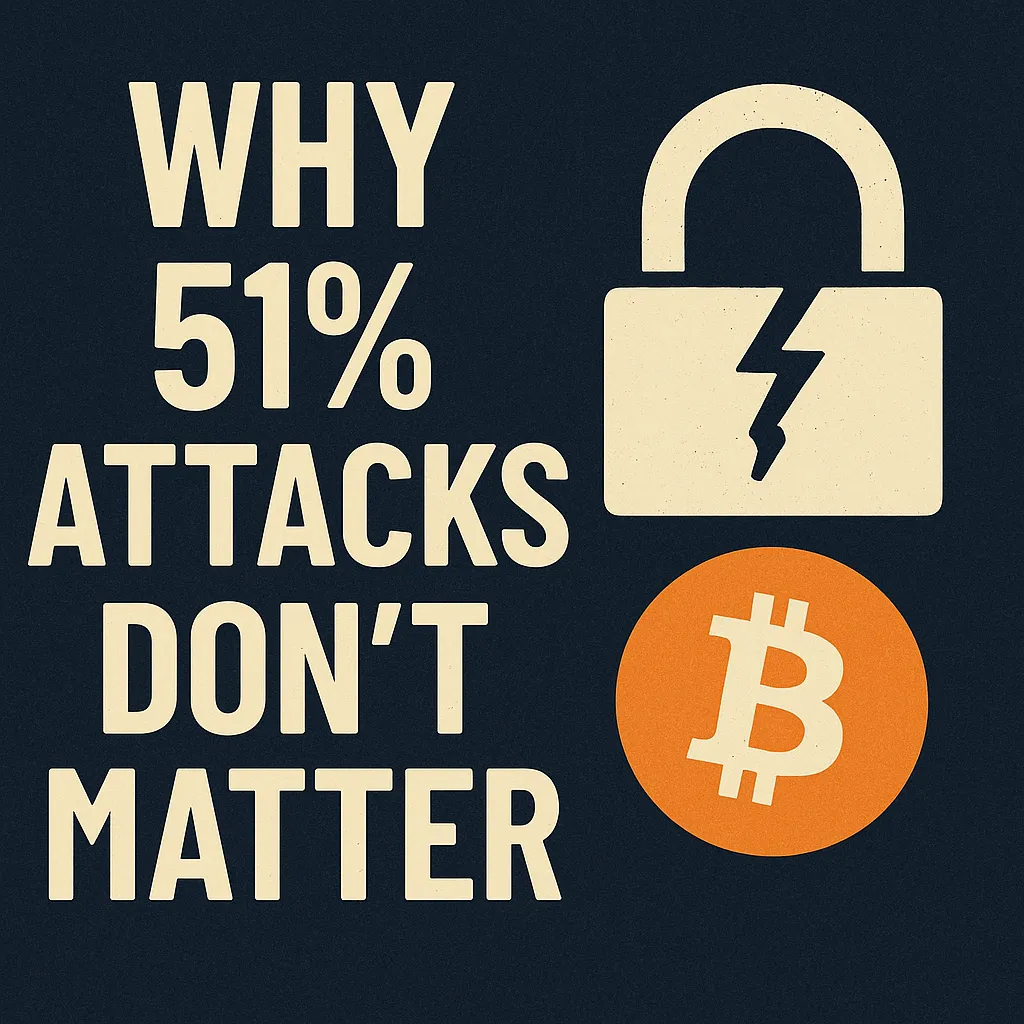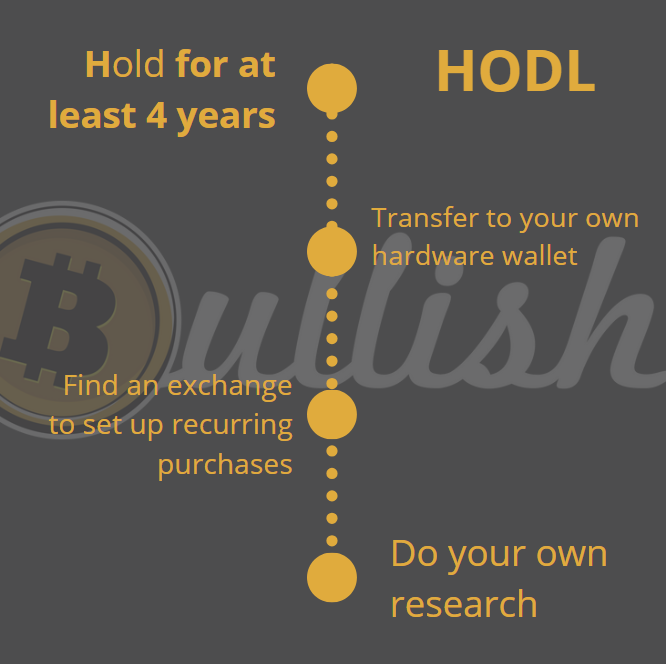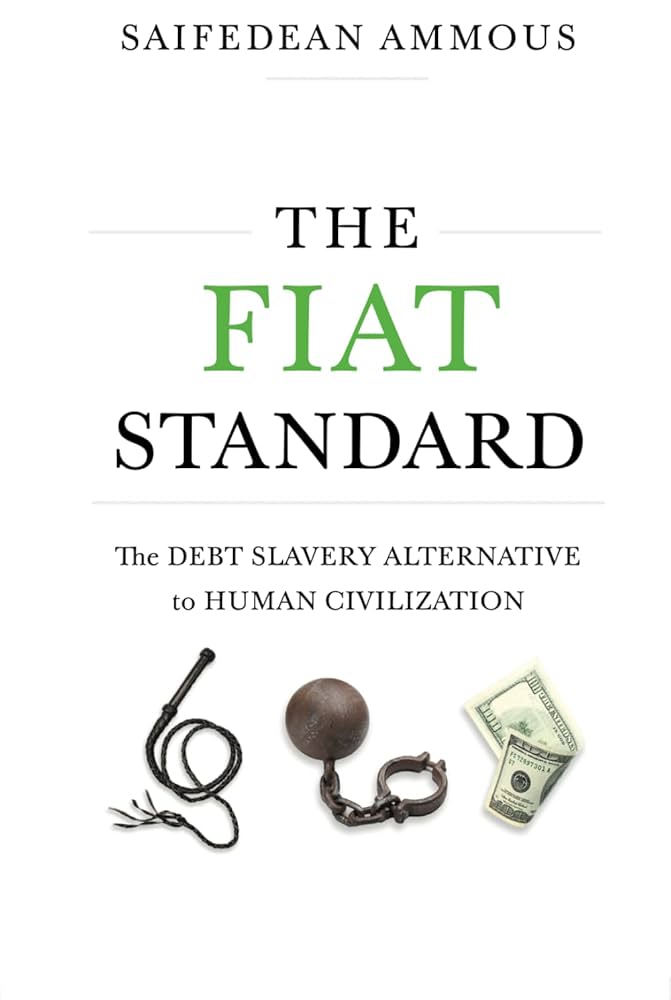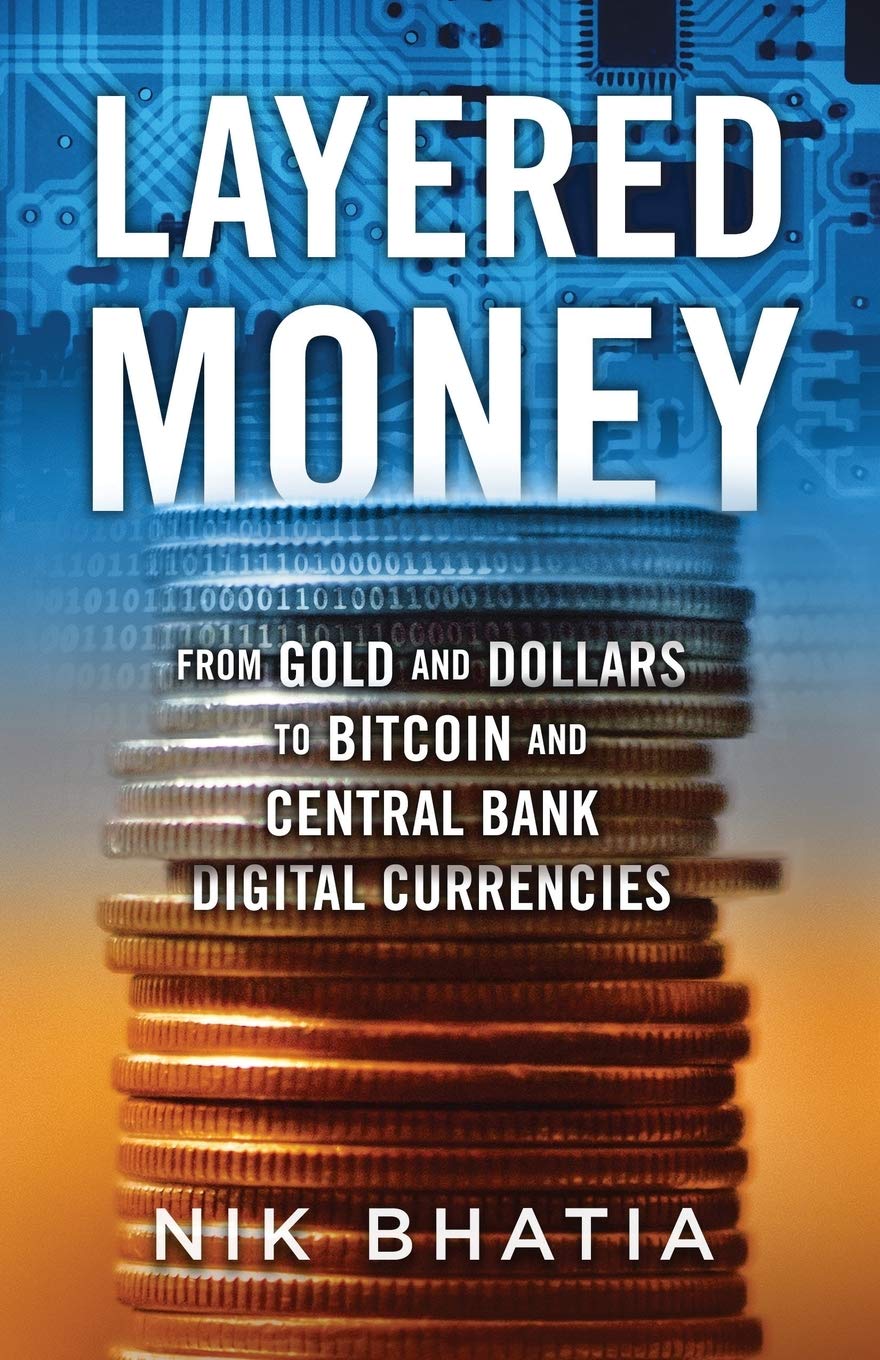BITCOIN AS
SOUND MONEY
BITCOIN AS
SOUND MONEY
Explore how Bitcoin restores financial integrity with fixed supply, decentralization, and resistance to inflation. This resource breaks down why Bitcoin isn’t just digital currency—it’s the foundation for a more stable, honest monetary future.

"Bitcoin fixes the root of economic instability: money that loses value over time.”
– Saifedean Ammous

"Bitcoin fixes the root of economic instability: money that loses value over time.”
– Saifedean Ammous
Featured

Why 51% Attacks Don’t Matter: Incentives Protect Bitcoin
One of the most common Bitcoin fears goes like this: “What if a bad actor takes over 51% of the network’s hash power and rewrites history?”
It’s a scary thought on the surface. But in practice, 51% attacks don’t matter. They are economically self-defeating, politically suicidal, and technologically temporary.
Let’s break down why.
What Is a 51% Attack?
A 51% attack happens when a miner, or coalition of miners, controls more than half the total computing power securing the Bitcoin network. With that much hash power, they could:
Temporarily prevent some transactions from being confirmed.
Attempt to “double spend” coins by reorganizing recent blocks.
But what they cannot do is:
Create new coins outside Bitcoin’s code.
Steal other people’s coins.
Change the rules of the network without global consensus.
At worst, they cause disruption. They cannot destroy Bitcoin.
The Incentive Problem
Mining Bitcoin is expensive. Hardware costs billions. Electricity costs billions more. The entire business model of mining depends on Bitcoin retaining value.
If an attacker tried to double spend or disrupt the chain, markets would instantly react. Confidence would drop, the price of Bitcoin would fall, and the attacker’s own mining equipment would lose profitability.
In other words: the attack destroys the very thing that gives the attacker revenue. It’s like buying a gold mine and then nuking the gold market.
Coordinating a Majority Is Unrealistic
Bitcoin’s hash power is globally distributed across thousands of miners in dozens of countries. To reach 51%, an attacker would need to coordinate across multiple jurisdictions, energy markets, and business competitors.
Even if they managed to reach majority control, other miners could quickly respond:
Honest miners can shift to different mining pools.
Developers can implement countermeasures.
The community can upgrade software to penalize attackers.
Unlike fiat systems, Bitcoin doesn’t rely on trust in one institution. It is designed to route around damage.
Historical Attempts
Other smaller blockchains have suffered 51% attacks — and the result is always the same: the attacker undermines their own investment, the network hardens, and confidence eventually returns.
Bitcoin, with the largest and most secure hash power in history, is orders of magnitude harder to attack. The cost and risk are astronomical.
Why 51% Attacks Don’t Matter
Bitcoin doesn’t need to be unattackable. It only needs to make attacks irrational. The economics, incentives, and game theory ensure that a 51% attack is not a profitable strategy.
Attackers can’t change the rules. They can’t print coins. They can’t steal your sats. They can only burn billions to make temporary chaos — and in the process, they destroy themselves.
Bitcoin’s greatest defense isn’t just math. It’s incentives.
Shout out to BullishBTC.com — building conviction and clarity in the Bitcoin Renaissance.
Bitcoin: The Perfect Solution to Broken Money
The Stories We Tell About Money
The Bitcoin Standard | Saifedean Ammous
True Cost of Inflation | Michael Saylor and Lex Fridman
Explained: What Is Sound Money?
Escaping the Global Banking Cartel - Bitcoin as an Exit
No More Inflation | Why Everything Gets More Expensive & What We Can Do About It
Hard Money - WTF Happened in 1971?
OUR GOAL
Our goal is to educate others on the value of owning Bitcoin from both a financial and humanitarian perspective.
QUICK LINKS
© 2025, BullishBTC. All rights reserved.







